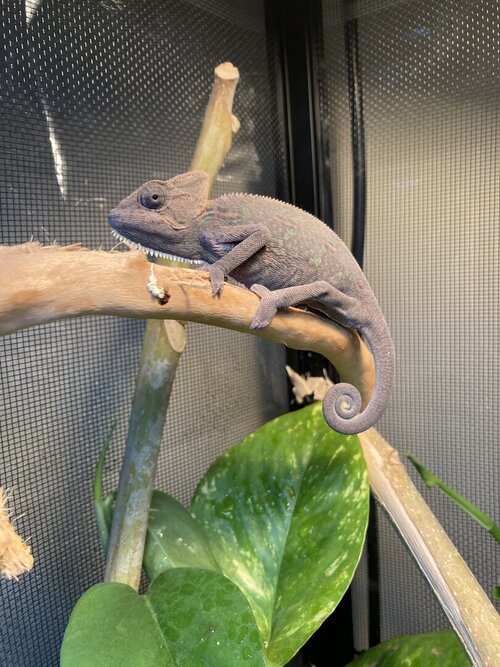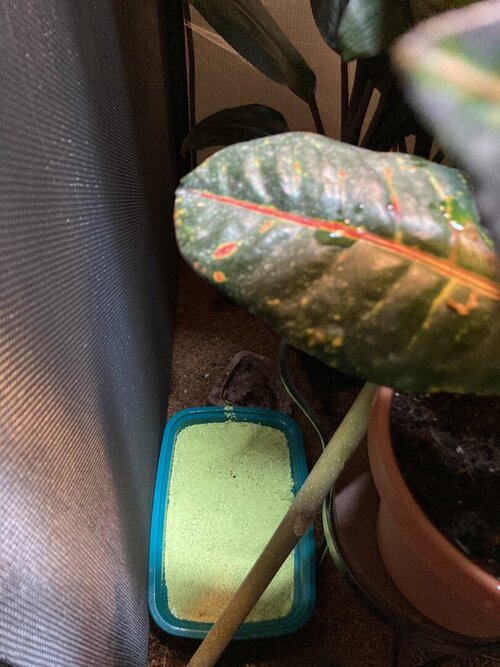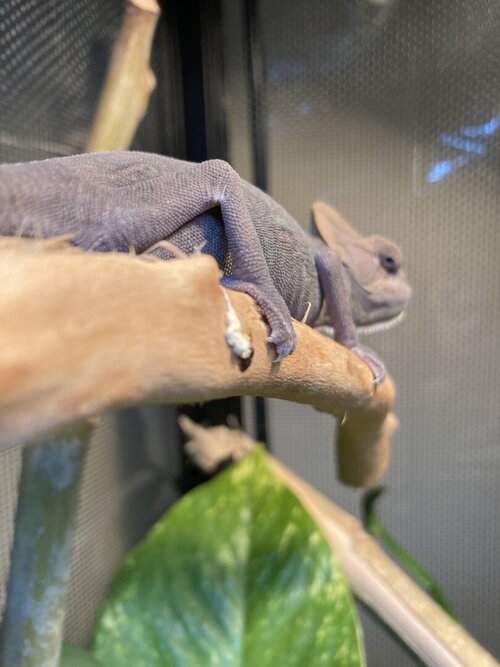willowthechameleon
New Member
Hello, I just got a baby veiled (I'm pretty sure female) on April 1st. I noticed she's been acting strangely. She's not been eating as much and when she wakes up she goes straight to her basking branch and stays there the whole day. Before this week she was active and going around the cage. Her cage temp stays around 70 but I can't get a temperature gun to find her basking temp. She also seems a tad chubbier than before, could she be laying eggs soon or is she sick? If she is laying eggs soon, is this okay for a laying bin? It is hermit crab sand in a dish.








